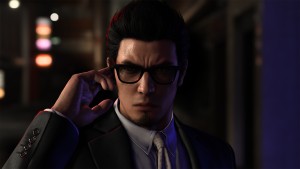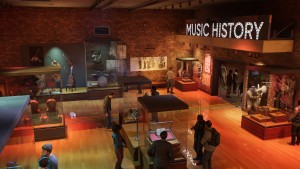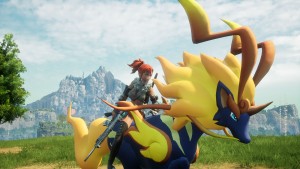Why Watch Dogs 2 Had To Be In San Francisco
Watch Dogs 2 rights a lot of wrongs of its flawed, yet enjoyable predecessor. Watch Dogs 2’s characters were lighthearted, more optimistic, and generally more enjoyable than those in the first game, but the biggest change came with the biggest character: the city. San Francisco is an incredible fit for Watch Dogs 2. Not only does it speak more to the hacker culture Watch Dogs is influenced by, it also is a more natural environment for Ubisoft to speak to the themes of diversity and class warfare.
San Francisco and Silicon Valley are more in line with Watch Dogs 2’s technology and hacker themes. Chicago has the most advanced surveillance system in the country, making it work in tandem with the first game’s themes on peering into people’s lives. But outside of that one point, Chicago doesn’t have the same reputation as a tech haven.
Most of the San Francisco Bay Area houses tech giants like Microsoft, Facebook, Twitter, LinkedIn, and hundreds of other wealthy tech startups we have probably never heard of. This common setting gives Watch Dogs 2 a more direct line to parody actual companies and tech trends. In the game, Nudle functions as Google, which gives Ubisoft an avenue to point out controversies in the class war surrounding Google buses and racial diversity in tech. As Marcus, the protagonist, poses as a Nudle bus driver, he is subjected to the pretentious chatter from the passengers bragging about their goji berry smoothies and how their catered sushi was “literally the worst.” Google buses get criticized for being an elitist way to travel to work that’s separated from normal, less wealthy people, and the snippets of dialogue during the bus ride are a sly way to present this issue.

Invite is the obvious analog to Facebook, which opens the door for commentary about how social media can sway public thought along with tapping into our fear of companies misusing our personal data. Marcus discovers that Invite is trying to get congressman Mark Thruss elected by manipulating people’s feeds to sway people to vote for Thruss. It may have been unintentional, but it’s eerily similar to the lies Facebook’s “news” algorithm promoted that confused people during the 2016 United States presidential election. While Ubisoft itself was politically agnostic in its mission design, this showed the possibility of poisoning a democratic process through unethical uses of our social networks; realizing the trust issues many people have with Facebook. Placing real-world issues in or near their real-world locations makes Watch Dogs 2’s commentary more authentic and less abstract; something the first game struggled with.
The first game also struggled with representation and diversity, pinning black characters as antagonistic thugs and most women as sexualized victims. It was a tone-deaf, one-note portrayal of groups of people, but doubly so given Chicago’s history of racial issues and current demographics.
San Francisco’s liberal values opens the door for Watch Dogs 2 to correct its past mistakes in a LGBTQ-friendly and racially varied setting that forces them to make a more diverse game. Different mental conditions, races, sexual orientations, and gender identities are all featured in Watch Dogs 2 for reasons other than filling out a checklist. Marcus and his fellow DedSec hacker Horatio visit the Nudle offices and give the audience insight on being one of the few black people in a tech company. The powerlessness of facing discrimination from your superiors, having to speak for “all of blackdom,” and being congratulated for being “well-spoken” are a few of the daily issues Horatio faces at his job, all of which parallel real issues real people of color face in (and out of) the tech community. The mission wasn’t centered around that conflict, but was colored by it; making the player aware of a real issue in an unobtrusive way.

Transphobia is also similarly touched on, which fits San Francisco since it has the highest concentration of transgender people in the country. Miranda, a transgender city councilor, has her transitional surgery tapes leaked by cultists in an attempt to humiliate her. But instead of submitting to the public exposure of a private matter, she sharpens her efforts to dismantle the cult and is frank about her feelings towards the attacks: she “didn’t give a s*it.” Her admirable courage makes her a strong enough character to move on and become a more capable person despite others using a perceived weakness and social stigma to shame her. It's a tangential story used to strengthen a character rather than punish her; something transgender characters don’t often see in media.
The Bay Area is also facing a housing crisis and heavy gentrification, which are both wars between the people with power and money against those without. DedSec’s mission to hack unethical corporations fits this struggle since hacking in and of itself is geared for digital Robin Hoods to help the powerless fight against the powerful. Watch Dogs 2 tackles housing, gentrification, and other local issues by weaving them into hacking subplots. Marcus and his crew use their hacking skills to reverse these unjust, oppressive practices and take power away from the crooked companies by redistributing the wealth, exposing corruption, and unifying the people.
One side mission shows people getting pushed out of their homes through corrupt companies using software to drive up the price of their bills and force them to move. The cause for this issue is different in real life, but this actually happens, which is why many people – including Marcus – move east to escape the high rent prices in San Francisco. The game filters racial profiling, unfair healthcare, systemic injustice, and other social issues through the lens of hacking and technology, which serves two purposes: the game’s central themes and the strengths of the setting. These injustices aren’t exclusive to San Francisco, but the activism against them and liberal values have defined the area as well as being a technological sanctuary.

It’s better when a setting serves a game by being more than a level to drive or walk through. Open world games get the luxury of picking a singular setting that can have a more focused message or theme that linear levels might not be able to express. For example, Liberty City worked for Grand Theft Auto IV, since Niko Bellic’s twisted American Dream echoed the real American Dream New York is closely associated with. Other parts of the United States have elements of the American Dreams but no city symbolizes that more than New York, which Liberty City is based on.
New Bordeaux, the fictionalized version of New Orleans in Mafia III, was similarly strong in providing a place that matched the themes. Racism in the southern states could be expressed in other areas, but New Orleans’ multicultural roots gave the racial backdrop of the story more of a punch. Every game needs a setting but a more powerful, more effective setting, can help the game tell a more powerful, more effective narrative.
Watch Dogs 2 used San Francisco to its advantage in multiple ways and was a better game because of it. Chicago worked well in the first game for commenting on surveillance, but it really only served that one purpose. San Francisco’s prevalent tech scene is a better base for Watch Dog’s hacker themes that help support Ubisoft’s commentary on social issues inherent to the area. Few places are as diverse and full of cutting-edge technology as the San Francisco Bay Area, and Watch Dogs 2 uses those aspects in unison to make a cohesive world with more effective themes.










